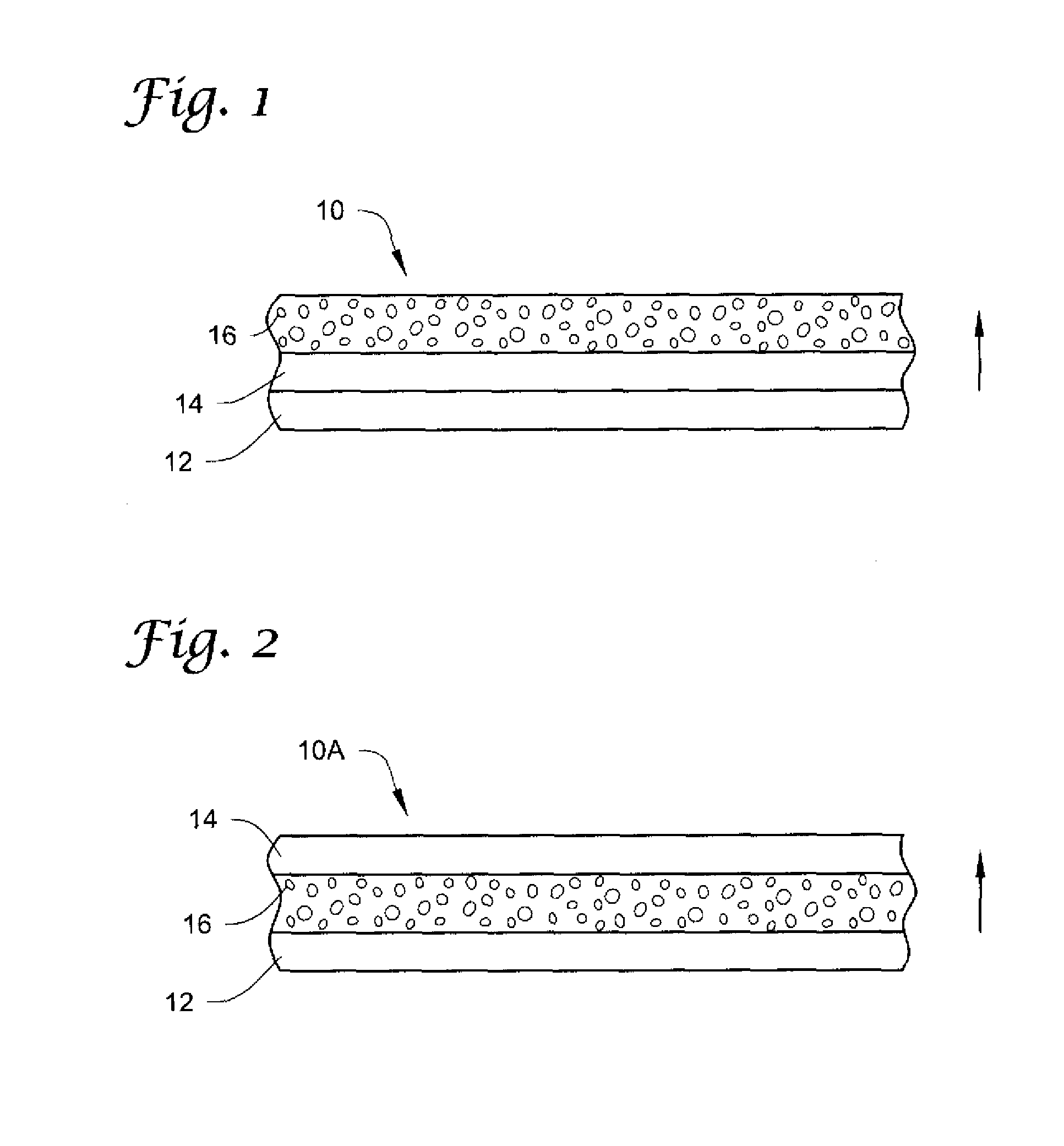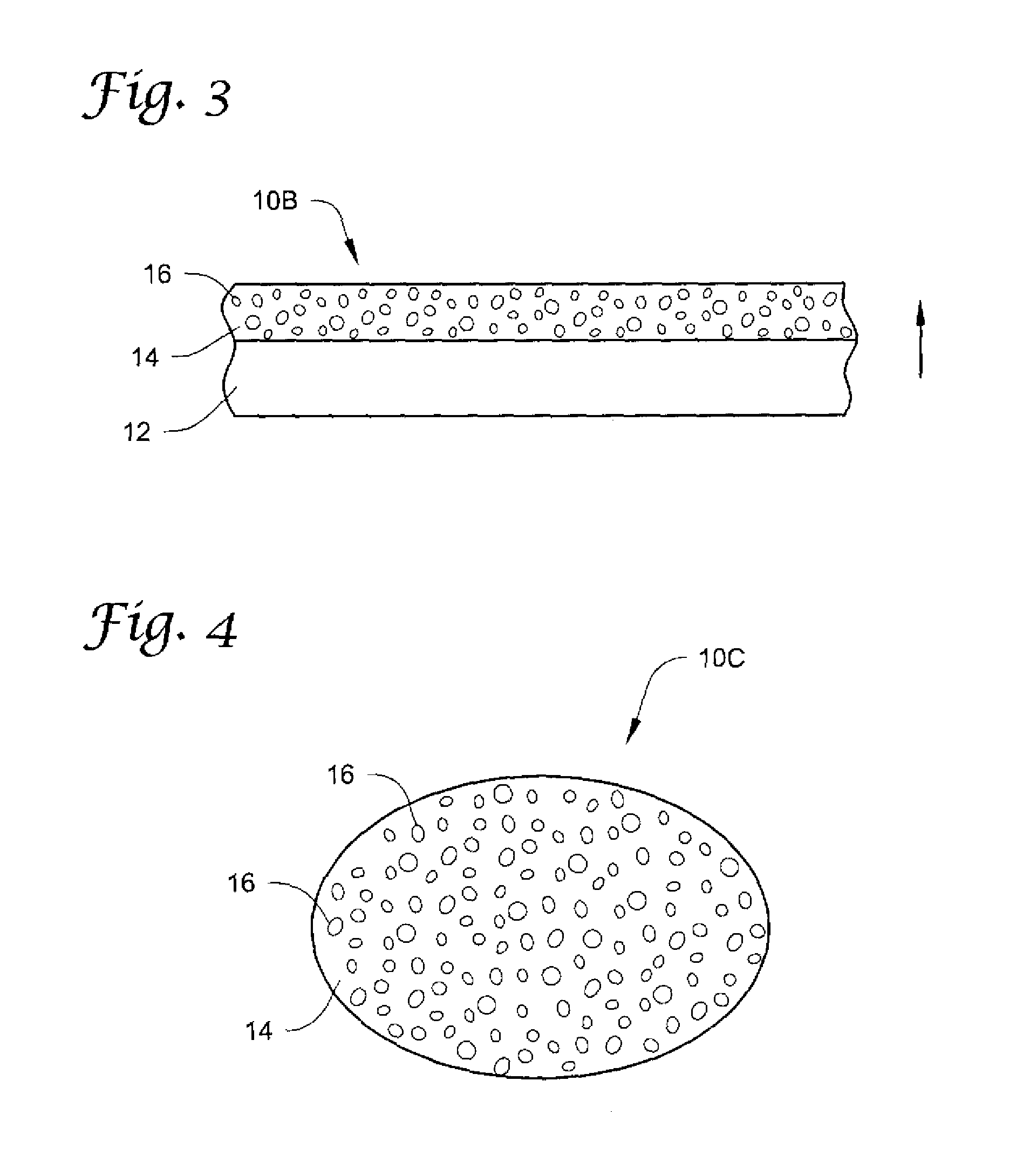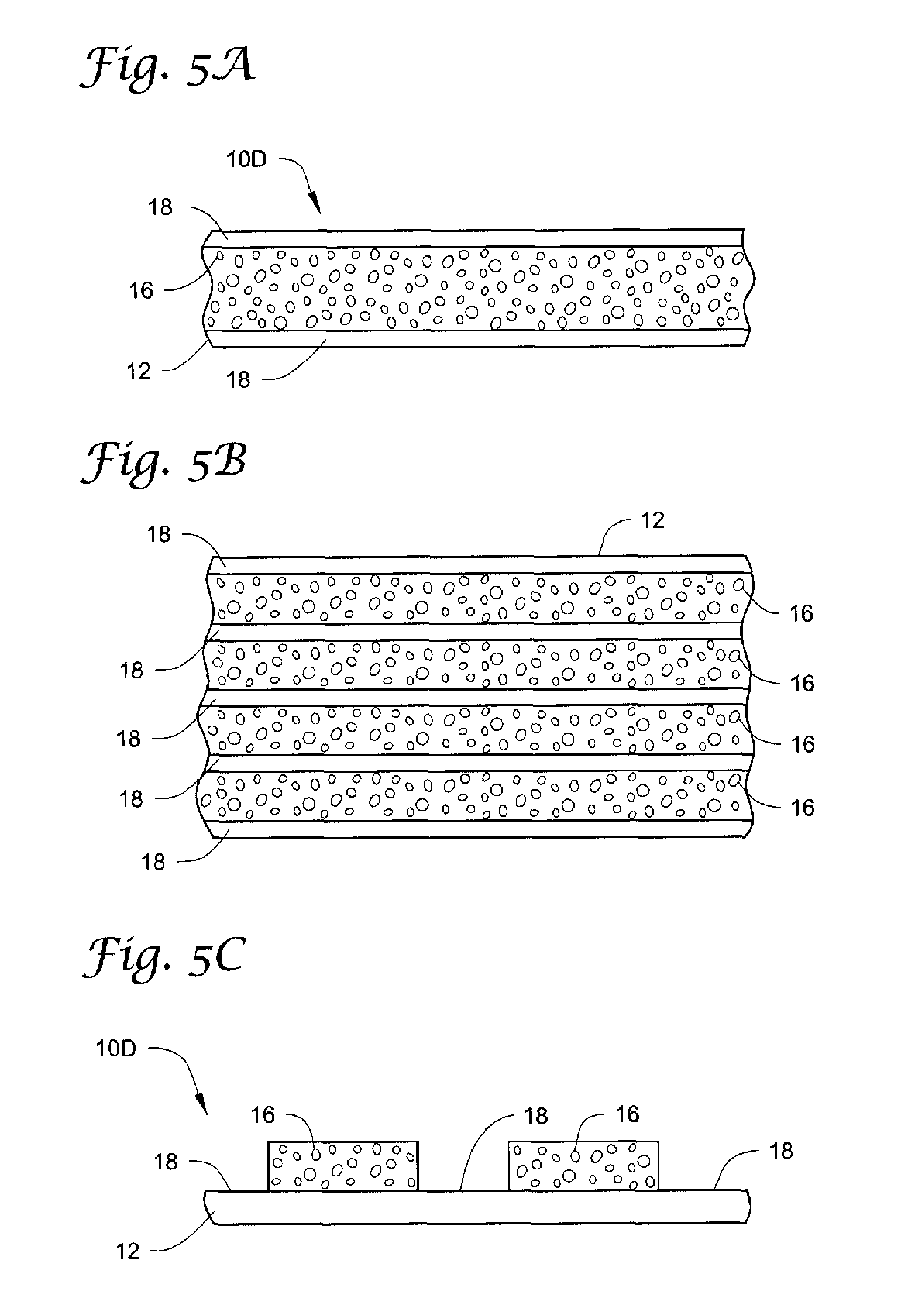Printing inks with property enhancing microcapsules
a technology of printing inks and microcapsules, applied in the direction of inks, duplication/marking methods, coatings, etc., can solve the problems of passports, low durability in regular use of documents, and limited ink starting forms, etc., to achieve enhanced properties, improved adhesion, and color change
- Summary
- Abstract
- Description
- Claims
- Application Information
AI Technical Summary
Benefits of technology
Problems solved by technology
Method used
Image
Examples
example a
FIG. 1; Pressure-Sensitive Adhesive as the Property Enhancing Component
[0078] An ink material was prepared of the following composition:
[0079] The ink was deposited onto a 0.6 mil untreated polypropylene film and metered with a # 15 mayer rod. The ink was dried at 200° F. for 20 seconds and the embodiment was made ready for the adhesive coat.
[0080] An adhesive was prepared with the following composition:
ComponentWt. %Adcote ® 37R97255Microencapsulated Gel-Tac ® Adhesive 216B45
Adcote ® is registered trademark of Morton International, Inc.
Gel-Tac ® is registered trademark of Advanced Polymers International
[0081] The above adhesive was deposited onto the ink coated film above and metered with a #10 mayer rod. The coated film was dried at 200° F. for 30 seconds and was ready for conversion into ribbon for the printing process.
example b
FIG. 3; Pressure-Sensitive Adhesive as the Property Enhancing Component
[0082] An ink was prepared of the following composition:
ComponentWt. %Tint-Ayd ® 317H25Elvacite ® 40368Wax Dispersion 4010GELVA ® GMS RA1151 - Microencapsulated20DOP2xylene35
Elvacite ® is a registered trademark of Ineous Acrylics
GELVA ® is a registered trademark of Cytec Industries Inc.
Tint-Ayd ® is a registered trademark of Elementis Specialties, Inc.
UCAR ™ is a trademark for Union Carbide Chemicals and Plastics Company Inc.
Wax Dispersion 40 is commercialized by Michelman, Inc.
[0083] The ink was deposited onto a 0.6 mil untreated polypropylene film and metered with a #20 mayer rod. The ink was dried at 200° F. for 30 seconds and the embodiment was ready for conversion into print ribbon.
example c
FIG. 3: Air Drying Alkyd as the Property Enhancing Component
[0084] An ink was prepared of the following composition:
ComponentWt. %Black base BB 135525Wax Dispersion 14110Additol XL6515- Microencapsulated5Cellolyn 95-80T10Aroplaz ® 1271 Linseed Oil - Microencapsulated10xylene40
Additol XL6515 is commercialized by Cytec Industries Inc.
Aroplaz ® is a registered trademark of Reichold Inc.
Black base BB 1355 is commercialized by Elementis Specialties, Inc.
Cellolyn is a trademark of Hercules Incorporated
Wax Dispersion 141 is commercialized by Michelman, Inc.
[0085] The ink was deposited onto a 0.6 mil untreated polypropylene film and metered with a #24 mayer rod. The ink was dried at 200° F. for 30 seconds and the embodiment was ready for conversion into print ribbon.
PUM
| Property | Measurement | Unit |
|---|---|---|
| Time | aaaaa | aaaaa |
| Fraction | aaaaa | aaaaa |
| Fraction | aaaaa | aaaaa |
Abstract
Description
Claims
Application Information
 Login to View More
Login to View More - R&D
- Intellectual Property
- Life Sciences
- Materials
- Tech Scout
- Unparalleled Data Quality
- Higher Quality Content
- 60% Fewer Hallucinations
Browse by: Latest US Patents, China's latest patents, Technical Efficacy Thesaurus, Application Domain, Technology Topic, Popular Technical Reports.
© 2025 PatSnap. All rights reserved.Legal|Privacy policy|Modern Slavery Act Transparency Statement|Sitemap|About US| Contact US: help@patsnap.com



